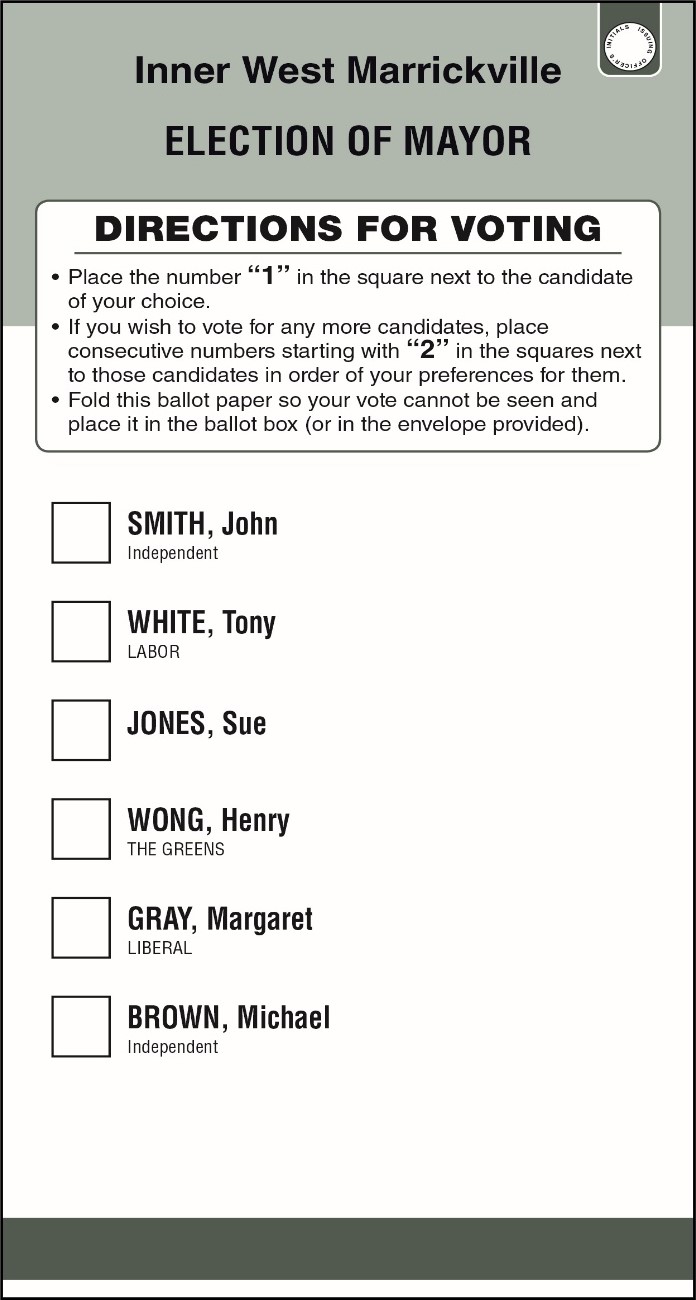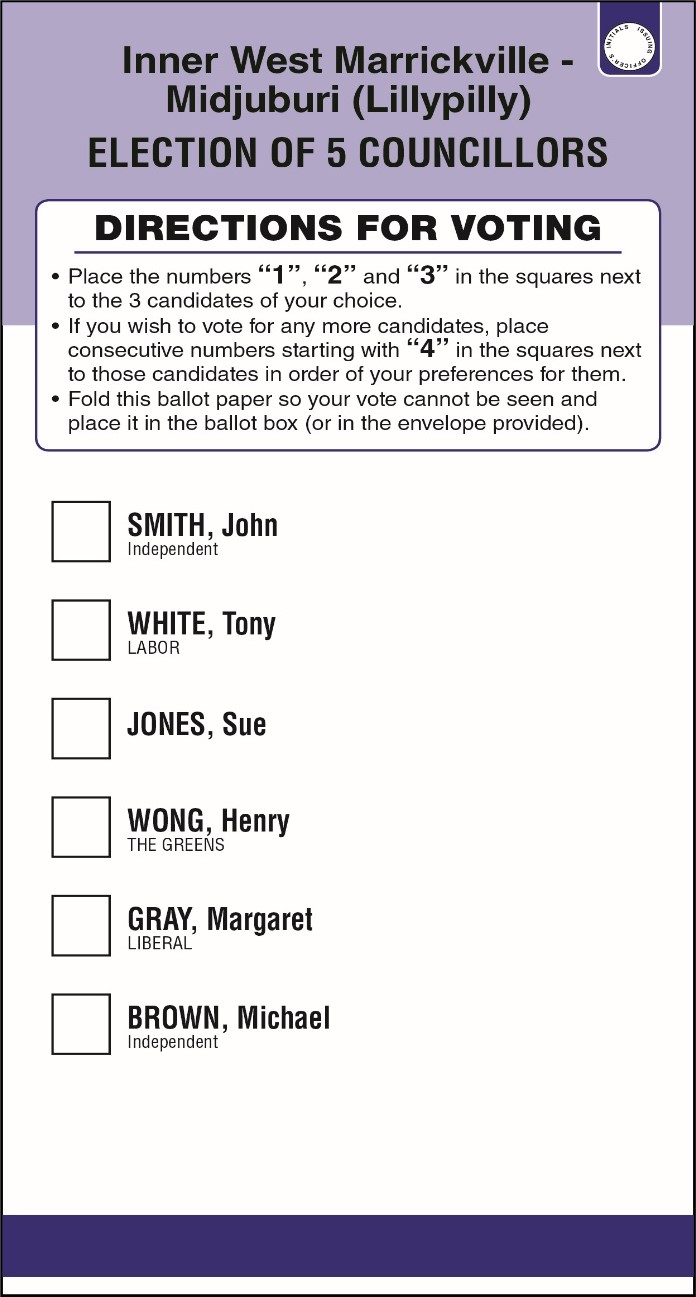Ballot paper formats
The format of the councillor ballot paper will vary depending on the type of election and whether candidates have formed into groups and have requested group voting squares.
On this page
Printing of ballot papers
All ballot papers for all elections and constitutional referendum/council poll papers will be printed by a single printer contracted by the NSW Electoral Commission. This is to control security in the printing process and ensure that the production of ballot papers is of a consistent format and quality.
Candidates’ names on ballot paper
A candidate’s surname and one given name will be printed on the ballot paper. The surname will appear as it is on the electoral roll.
The given name can be:
- any one of the candidate’s given names (as enrolled), or
- a commonly accepted variation of the name (including an abbreviation or truncation of that name or an alternative form of that name, for example, Tom for Thomas, Jack for John, Peggy for Margaret) or
- a commonly used other name specific to the candidate by which the candidate is usually identified. In this case the Returning Officer must be satisfied that the candidate is usually identified by the proposed name or
- an initial standing for any of the candidate’s enrolled given names can also be used.
No titles, for example Dr or JP, are permitted.
Party affiliation or ‘Independent’ on ballot paper
Candidates nominated by a registered political party may request to have the registered name of the party (or its registered abbreviation) printed on the ballot paper below their name and below the group voting square.
Candidates not endorsed by a registered political party may request to have the word ‘Independent’ printed below their name on the ballot paper, or not.
Directions for voting
The directions for voting are printed on the ballot papers.
To vote formally for Councillor, electors are required to indicate preferences for at least half the number of Councillors to be elected (ie, if 10 Councillors are to be elected, at least five preferences must be shown; if seven are to be elected, at least four preferences must be shown for the vote to be formal).
To vote formally for Mayor, electors are required to indicate a first preference and may indicate preferences for as many other candidates as they wish.
The directions printed on each ballot paper will specify the number of preferences required for a formal vote.
Example 1: Mayor ballot paper

In Example 1 electors are required to place the number 1 in the square next to their preferred candidate. They can, if they wish, show as many preferences for as many other candidates as they like.
Example 2: Councillor ballot paper with no groups

In Example 2 there are five Councillors to be elected. Electors are required to place the numbers 1, 2 and 3 in the squares next to their three preferred candidates. They can, if they wish, show as many preferences for as many other candidates as they like, in any order they like.
Example 3: Councillor ballot paper with groups but no group voting squares

In Example 3 some candidates have formed groups and some have not. There are four Councillors to be elected, so electors are required to place the numbers 1 and 2 in the squares next to their two preferred candidates. The elector can then, if they wish, show as many preferences for as many other candidates as they like, in any order they like.
Example 4: Councillor ballot paper with group voting squares

In Example 4 some candidates have formed groups and some have not. Some groups have group voting squares. This means that electors have the choice of voting above the thick black line in the group voting squares, or below the line for individual candidates.
If voting above the line, electors only need to place the number 1 in the group voting square above their preferred candidates. They can then, if they wish, show as many preferences in as many other group voting squares as they like, in any order they like.
If voting below the line, the elector must vote for at least the number of candidates as required by the directions for voting. If there are four Councillors to be elected, electors are required to place the numbers 1 and 2 in the squares next to their two preferred candidates. The elector can then, if they wish, show as many preferences for as many other candidates below the line as they like, in any order they like.
